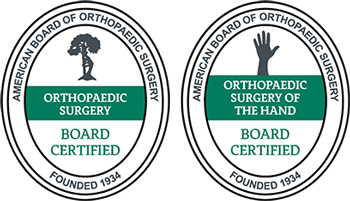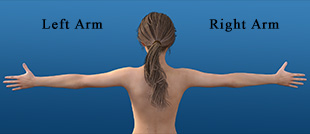What is the Recovery Time After Carpal Tunnel Surgery
Carpal tunnel syndrome, commonly just called “carpal tunnel,” is a painful condition affecting the carpal tunnel, the part of the wrist that connects your nerve to your hand. In extreme cases, surgery can be the most effective way to treat this condition and restore the painless use of the hand and wrist. Read on for The Hand and Wrist Institute’s overview of the carpal tunnel release recovery timeline.
Contents
What Is Carpal Tunnel Surgery?
Carpal tunnel syndrome typically occurs when the inner tissue of the carpal tunnel experiences inflammation and swelling. It sometimes swells so significantly that it presses against your median nerve, which can disturb the area.
This inflammation can result in symptoms like:
- Numbness in the hand and wrist.
- Tingling in the hand and arm.
- Pain in the hand and arm.
- Loss of control in the hands and fingers.
- Disruptive pain at night that could interrupt sleep.
If other treatment methods prove unsuccessful, carpal tunnel patients and their doctors sometimes choose to treat the condition with a procedure called carpal tunnel release. Carpal tunnel release is a relatively simple operation in which a surgeon cuts the carpal tunnel with a minor incision. The incision is typically only about 2 inches long. Opening the carpal tunnel allows it proper room to accommodate the inflammation and release the pressure on the nerve.
Some professionals use a new method called endoscopic release. This is a similar version of the surgery that utilizes robotics to widen the passageway in your wrist. Because the procedure is minimally invasive, many patients undergo it while awake and under local anesthesia. This means only the wrist and hand are numb.
How Long Does It Take to Recover From Carpal Tunnel Surgery?
It usually takes about two to three months for most patients to complete the bulk of their recovery from carpal tunnel surgery, but the full recovery process can take about a year. The timeline of carpal tunnel release recovery can vary depending on your procedure, the condition of your carpal tunnel, and personal factors like your age, occupation, and health outside of your carpal tunnel.
Here’s a basic post-surgery recovery timeline that many patients follow:
1 to 2 Weeks After Surgery
After a few weeks, you can typically remove your bandages or splint, and you’ll visit your doctor for the removal of your stitches. During the first weeks, you may experience pain and swelling as your incision heals. It’s typical for patients to struggle with their grip and movement in their hands during this time. Picking things up, writing, and typing may be difficult.
You can typically use over-the-counter medications to treat pain, like Advil or Tylenol. Many patients whose occupations don’t involve repetitive work with their hands can return to work in 7 to 14 days. If your work requires careful dexterity and repetitive movements, like that of a carpenter, tailor, cook, or massage therapist, you’d benefit from more time away.
1 Month
If you exercise your affected hand according to your doctor’s and physical therapist’s instructions, you can typically start moving it normally within about a month. Around this time, you may see your grip and coordination return, and you can usually resume most of your daily activities.
In this first month, you can use lotion to help your scar heal. Your symptoms, like pain and stiffness, typically start tapering off during this period, though some may remain. Continue following your doctor’s recommendations for recovery.
6-8 Weeks
By about two months after your procedure, your pain should fully subside. It’s normal to still feel some sensitivity around your incision site and wrist, especially when something hits it with force. Try to be gentle with the use of your hand, but it’s beneficial to increase activity gradually. Many people can return to more vigorous activities by 6 to 8 weeks, like sports or home maintenance. Patients who had severe carpal tunnel symptoms before surgery might take longer to return to their full range of motion.
1 Year
Most patients experience near-immediate relief from most of their carpal tunnel symptoms once their hand heals. By the end of the first year following your surgery, you’ll likely experience a complete recovery. Many patients recover entirely within a few months, but those who had severe nerve damage may take the full year.
What Is Carpal Tunnel Surgery Recovery Like?
Recovery from carpal tunnel surgery typically includes the following elements:
- Bandages: You’ll leave your appointment with a bandage or stint, which you can remove after about a week.
- Physical therapy: Most patients attend physical therapy to help them slowly regain the use of their hands, fingers, and wrists.
- Scar management: Your doctor or physical therapist will give you information about what to apply to your scar to protect it and help it heal.
Common Physical Therapy Exercises to Recover From Carpal Tunnel Surgery
Below are some exercises physical therapists often recommend to recovering carpal tunnel release patients:
Wrist Bends
This exercise helps you regain the range of motion in your wrist so you can move it freely again. To perform a wrist bend, begin with your arm out and your hand pointed up using a flexed wrist. You then slowly push the wrist back using your other hand until it’s perpendicular with your arm. You can hold it there for a few seconds. Be sure to approach this exercise gently.
Tendon Glides
Tendon glides help you strengthen your fingers. Start with your fingers facing upward, then bend them and sit your fingertips at the top of your palm. You should be looking at your fingernails. Next, gently extend your fingers down your palm until they reach the bottom of your hand. Leave them there for a few seconds, then repeat.
Finger Opposition
This simple exercise helps you re-develop the use of your fingers and practice controlling them. Stick your thumb up and, one by one, touch each fingertip to it. Aim to keep the fingers and thumb as erect as possible. Perform using your full hand and repeat 10 times.
Surgery can be scary, but pursuing carpal tunnel release surgery can give you your freedom back. Understanding your procedure and what life looks like after it can help you prepare for your operation. If you’re suffering from carpal tunnel and are curious about surgery and other treatment options, contact The Hand and Wrist Institute today.
Person in blue shirt showing left hand by towfiqu999999 is licensed with Unsplash License


























